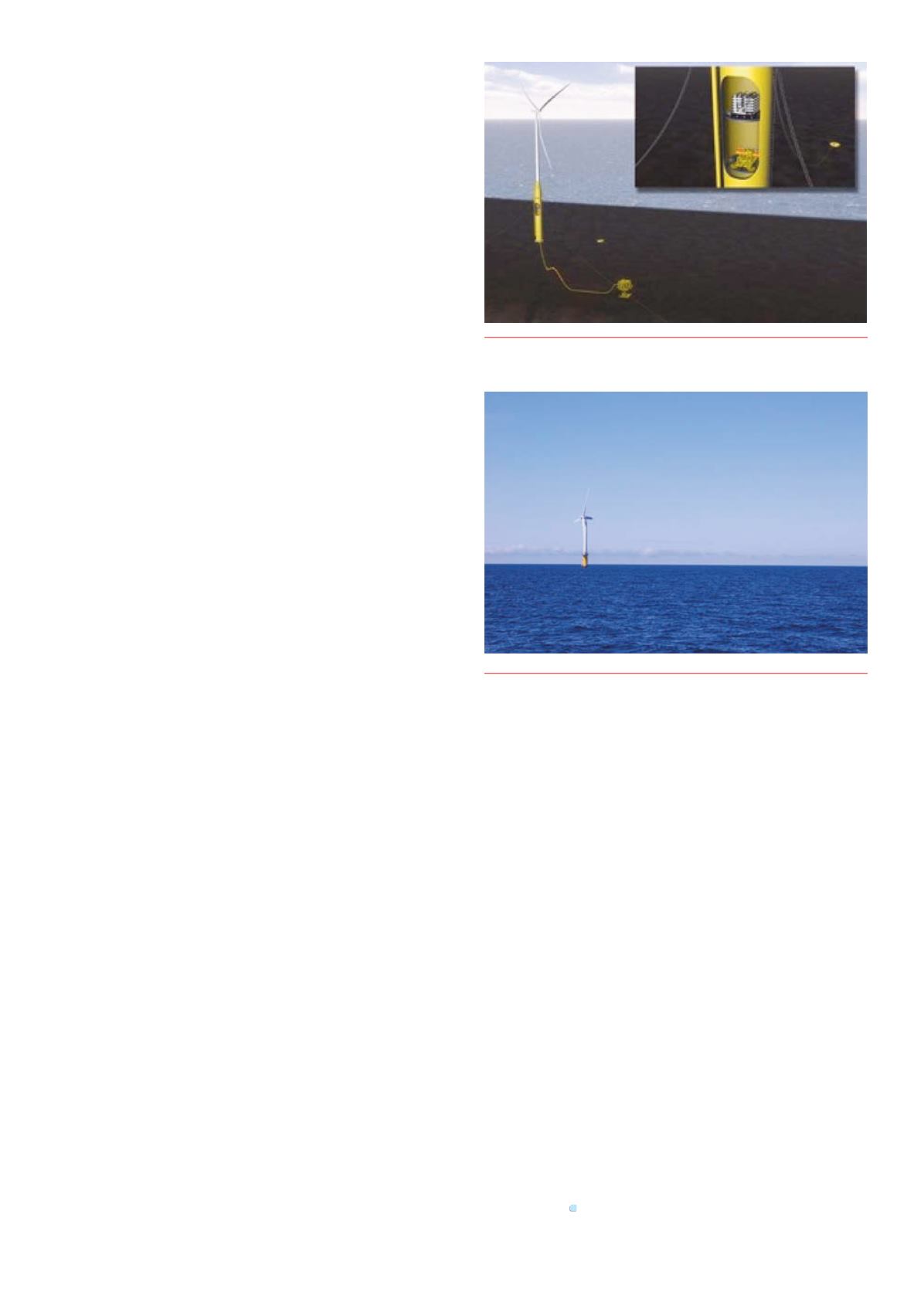
December
2014
Oilfield Technology
|
41
Common water injection systems typically have pump power
requirements of around 5 MW. The wind turbine rating should be
around 5 ‑ 6 MW and such turbines can be sourced from several
of the major manufacturers of offshore wind turbines.
Operational challenges
The subsea injection pumps inject water into the reservoir and
can be configured in a single 5 MW induction motor driving a
single pump or two 2.5 MW motors driving two smaller pumps,
which provides a backup if one fails. The pumps should ideally
inject a specific total volume of water over the lifetime of the
project to maximise oil recovery. There are pump systems
available today that would allow for the variable power
provided by a wind turbine generator.
Electrical stability
In a balanced system, the supply of electricity equals the load.
At the same time the supply or load changes, the system must
reliably seek to restore balance. It is a design and operational
challenge to achieve this. In an interconnected electricity
network, this balancing action is achieved by output power
control settings of many generators. However, in the case of
a wind turbine, the generator is responsible for the stability.
This means that the generator must ensure it meets the pump’s
power demand despite the variable character of wind energy.
Advanced control algorithms and/or energy storage are required
to assure system stability.
Systemavailability
One possible downside of the concept is that it may take
longer to undertake repairs in case of failures, compared to a
traditional water injection system on the platform. However,
increasing the level of redundancy and installing smart asset
management and maintenance procedures will improve the
system’s availability and reduce problems.
Energystorageandbalancing
Due to the variable nature of wind, there is also a small back‑up
or energy storage requirement when the turbine does not supply
power. This is to keep the auxiliary systems of the turbines
and the pump on standby to be able to start‑up operation
autonomously after a powered down period. Once the wind
starts to blow again, the turbine has to come back online so
it can restart supplying power to the pump, which is called a
black start. Two possible solutions for a floating wind turbine
unit have been identified using either a diesel backup or a Li‑ion
battery system.
Poweringahead
Though the stand‑alone wind powered system is potentially
as technically feasible and cost‑competitive to alternative
solutions, the JIP will take a more detailed approach through
analysis of a number of technical case studies to be performed
at a range of water depths of around 100 ‑ 1000 m. This will
reflect typical characteristics for today’s conventional water
injection system developments.
An in‑depth technical feasibility study will also be
undertaken where specific site and reservoir data is used. A field
currently using the conventional solution of processed seawater
injection is suggested as this would allow for more direct
comparisons in relation to technology, operational challenges
and economic viability.
Building on the results obtained from an earlier study by
DNV GL, the main critical issues to be addressed by the JIP are:
Ì
Ì
Reservoir characteristics and well system.
Ì
Ì
Floating wind turbine system design and selection of wind
turbine.
Ì
Ì
Operational challenges and pump intermittency.
Ì
Ì
System stability and availability.
Ì
Ì
Power outages and black start capability.
Ì
Ì
Economic and regulatory aspects.
Once finalised, the ambition is to use the findings from the
project to implement a guideline for wind powered subsea water
injection and to support the industry by qualifying this concept
with a prototype installation.
Acollaborative force forEOR
A successful integration of offshore wind power with offshore oil
and gas operations could provide the oil and gas industry with
a new and cost‑efficient means to develop marginal reservoirs
and enhance production in mature fields with long step‑out
distances. It could significantly reduce costs for certain activities
while also offering a new niche market for offshore wind
technology, creating momentum for both industries – a crystal
clear win-win.
Figure 4.
Floating turbines have beendemonstrated in full
scale projects. (Image: Statoil’s Hywind turbine, photographer:
Knut Olav Ronold.)
Figure 3.
Thewind turbine sub‑structure canbe used for process
equipment suchas pumps or water treatment system.


